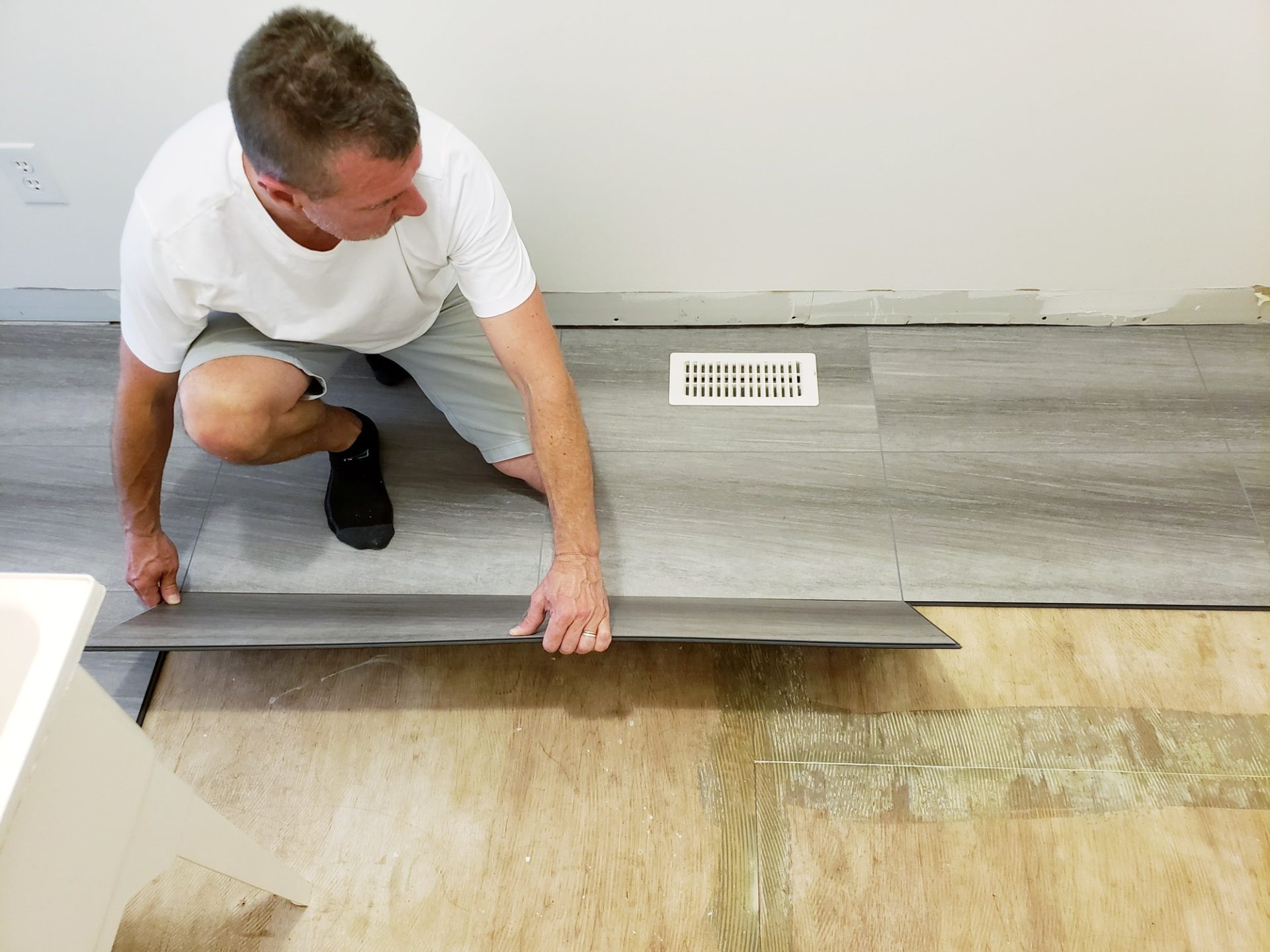Understanding PVC Flooring
Polyvinyl chloride (PVC) flooring is a versatile and widely used flooring material, recognized for its cost-effectiveness and durability. Comprised primarily of synthetic materials, PVC flooring is manufactured through a process that involves creating a solid base layer, followed by the application of printed designs and a wear layer to enhance durability. This results in a product that can withstand the rigors of daily use in both residential and commercial settings.
The appeal of PVC flooring is rooted in its resilience against wear and tear, which makes it suitable for high-traffic areas such as kitchens, living rooms, and offices. It is resistant to moisture and stains, thereby providing a practical solution in environments where spills may occur. Additionally, its low maintenance requirements further contribute to its popularity among homeowners and businesses alike.
In the market, there are primarily two types of PVC flooring: vinyl tiles and vinyl sheets. Vinyl tiles come in various sizes and designs, allowing for creative customization. They are generally easier to install, as they can be laid down individually, offering flexibility in design. Conversely, vinyl sheets are often sold in large rolls and are typically used in commercial settings for a seamless appearance. This type can cover expansive areas without requiring seams, which can enhance both aesthetics and hygiene.
PVC flooring is available in a wide array of colors, patterns, and textures, making it adaptable to different design preferences. As a result, it is commonly found in homes as well as government buildings, hospitals, and educational institutions. Understanding the fundamental aspects of PVC flooring is crucial before examining its potential disadvantages, as it highlights its notable features and the contexts in which it thrives.
Health Concerns Related to PVC Flooring
PVC flooring, while popular for its affordability and versatility, raises several health concerns that warrant careful consideration. One of the primary issues associated with PVC flooring is the emission of volatile organic compounds (VOCs). These compounds can be released during the installation process and may continue to be emitted over time, especially in poorly ventilated spaces. VOCs are known to contribute to various health problems, including respiratory irritation, headaches, and other long-term health effects. Understanding the potential for VOC emissions is crucial when evaluating PVC flooring as a viable option for your home or office.
Another significant concern regarding health risks linked to PVC products is the presence of phthalates, which are additives commonly used to make PVC more flexible and durable. Research indicates that certain phthalates may disrupt hormonal systems and pose reproductive risks, particularly to vulnerable populations like children and pregnant women. As regulations surrounding the use of specific phthalates evolve, the implications for health and safety become increasingly relevant for consumers selecting PVC flooring. It is essential to inquire about the specific formulations used in any PVC product before making a purchase.
In addition to VOCs and phthalates, consumers should be aware that other harmful additives may exist within PVC flooring. This includes stabilizers and fire retardants that can also emit toxic substances. To mitigate these potential health risks, it is advisable to look for flooring options that are certified for low emissions and are free from harmful chemicals. By doing so, individuals can select flooring that minimizes health impacts while still achieving the desired aesthetic and practical benefits. Awareness of these health concerns will help consumers make more informed decisions about their flooring choices.
Environmental Impact of PVC Flooring
The production and disposal of PVC flooring have raised considerable environmental concerns, making its sustainability a significant issue. PVC, or polyvinyl chloride, is a widely used plastic that is known for its durability and versatility; however, it comes with considerable environmental drawbacks. The manufacturing process involves the release of harmful pollutants, including dioxins which are byproducts of PVC production. These compounds can contribute to air and water pollution, damaging local ecosystems and posing health risks to communities surrounding manufacturing facilities.
Furthermore, the extraction and processing of raw materials for PVC can lead to habitat destruction and other environmental damages. The fossil fuels used in the production process contribute to greenhouse gas emissions, exacerbating climate change. As demand for flooring grows, the pressure on resources, including oil-based raw materials, intensifies, further impacting the environment. While PVC flooring is favored for its cost-effectiveness and visual appeal, these benefits must be weighed against its environmental costs.
Another significant concern is the lifecycle of PVC products after their use. Unlike some other flooring materials, PVC flooring is not biodegradable, meaning it can persist in landfills for hundreds of years. This contributes to the growing issue of landfill overflow and raises questions regarding waste management practices. Additionally, recycling PVC flooring is challenging due to the various additives and chemicals used in its production, making the recycling process inefficient and often economically unviable.
As the conversation around sustainable materials gains momentum, the environmental implications of PVC flooring illuminate the need for alternatives that do not compromise ecological integrity. Understanding these challenges associated with PVC can help consumers make informed decisions about their flooring options, pushing towards more eco-friendly choices that mitigate environmental impact.
Durability and Maintenance Issues
PVC flooring, while popular for its affordability and ease of installation, presents various challenges regarding durability and maintenance over time. One primary concern is its susceptibility to surface scratches. Although modern advancements have improved the scratch resistance of PVC flooring, high-traffic areas, such as hallways or living rooms, may still bear signs of wear and tear more readily than other flooring materials. The frequent movement of furniture or constant foot traffic can compromise the appearance and protective surface of the flooring, necessitating timely maintenance and repairs.
Another significant issue with PVC flooring is fading. Exposure to direct sunlight can lead to discoloration over time, detracting from the aesthetic appeal of the flooring. This fading can be especially pronounced in spaces with large windows or where sunlight streams in during the day. Property owners may need to consider protective window treatments or periodic resurfacing to combat this effect, which adds to the maintenance burden.
Moreover, PVC flooring is often more vulnerable to damage from heavy furniture. The combination of weight and force can result in dents or deformations, impacting the floor’s overall integrity and appearance. In addition, excessive moisture can pose a risk to PVC flooring, particularly in areas such as bathrooms or kitchens. Although PVC is generally resistant to moisture, prolonged exposure can lead to warping or mold growth if not adequately maintained.
In high-traffic areas, the long-term performance of PVC flooring can lead to noticeable declines, requiring repairs or even complete replacement sooner than anticipated. Therefore, when opting for PVC flooring, it is essential to weigh these durability and maintenance considerations against the benefits, ensuring informed decisions are made that suit the specific needs of the space.



